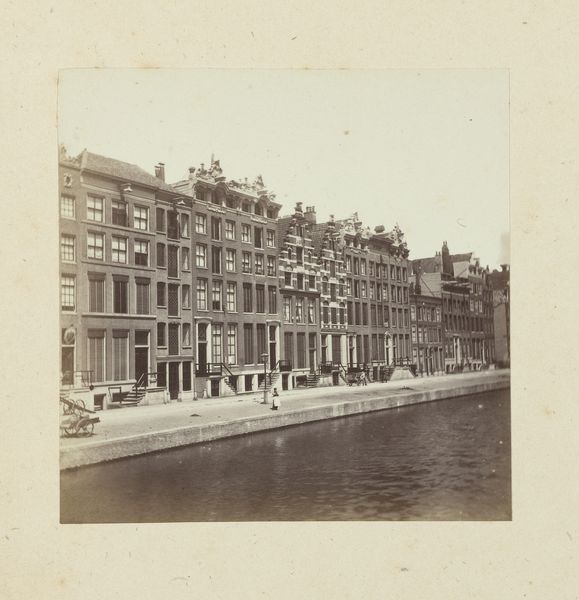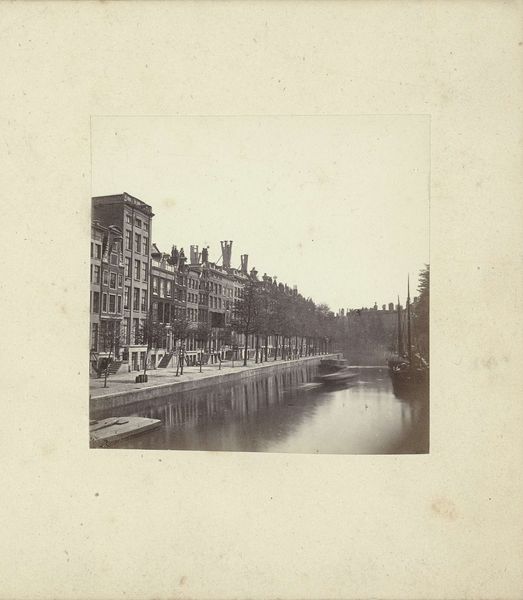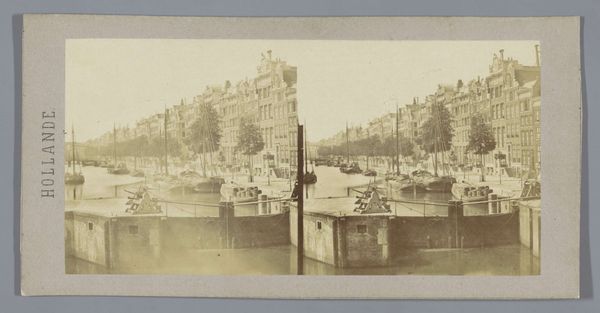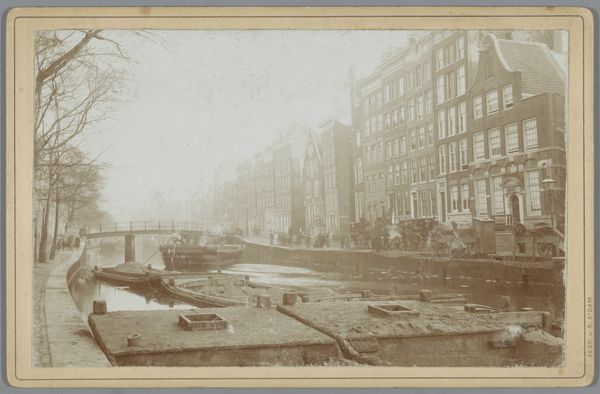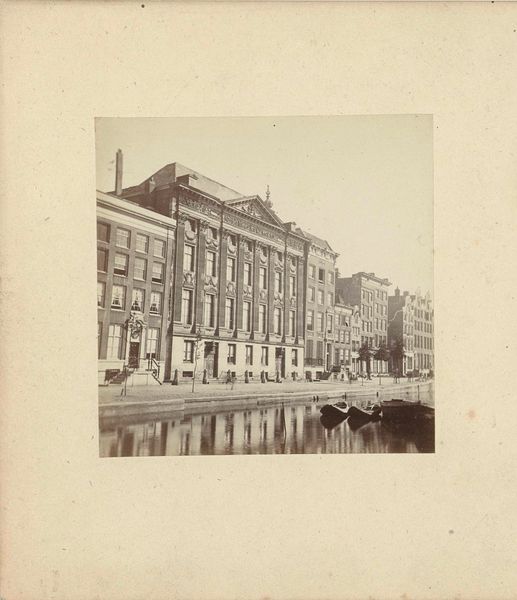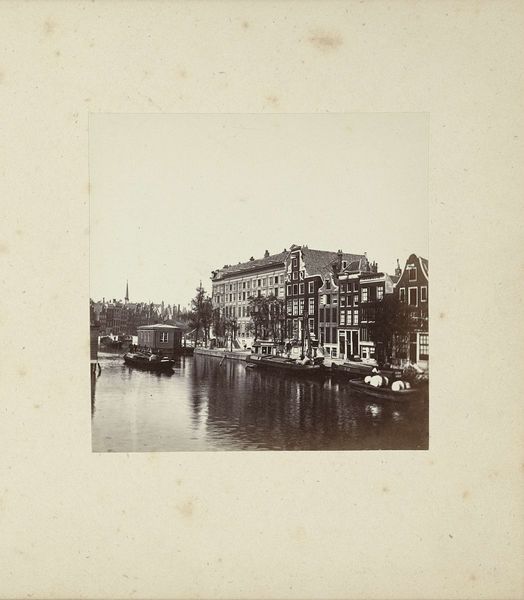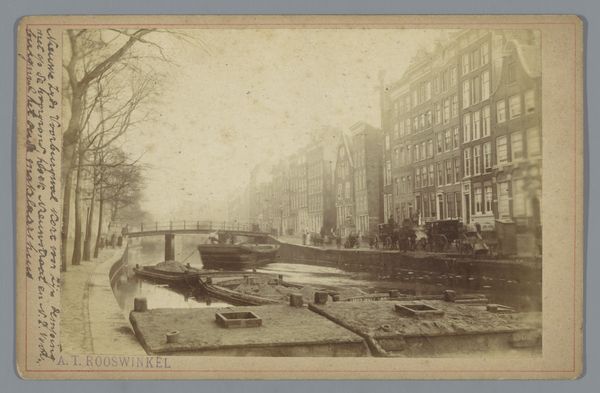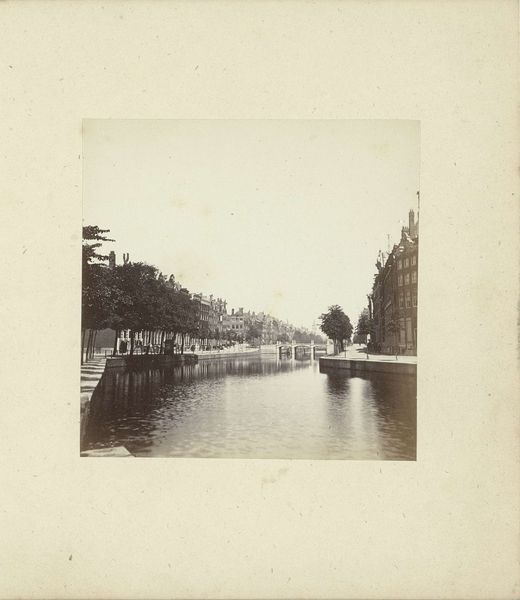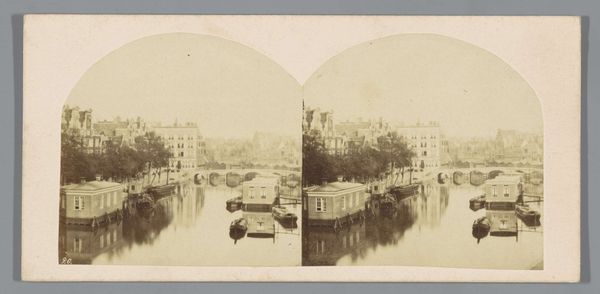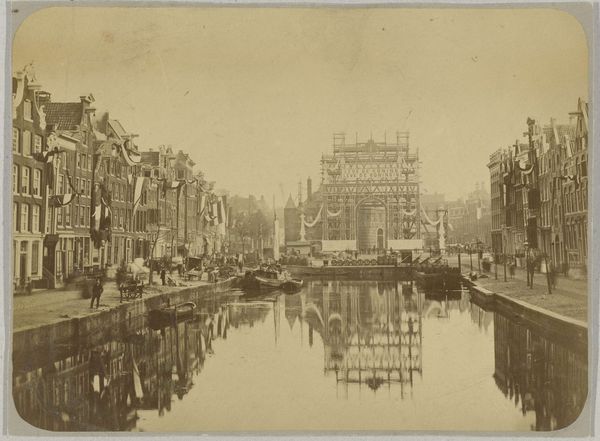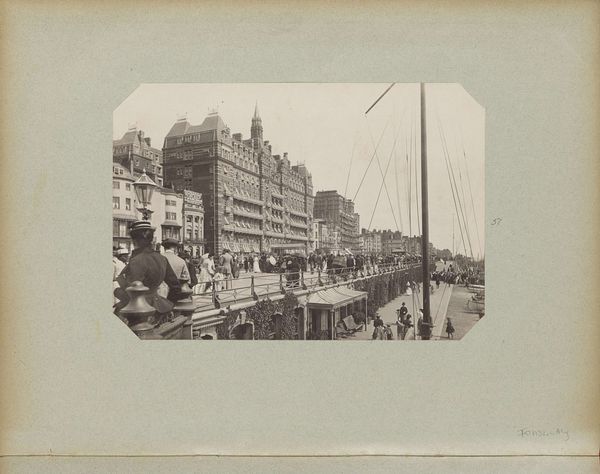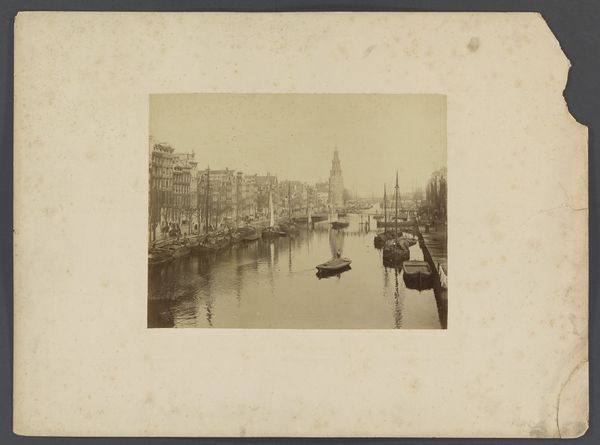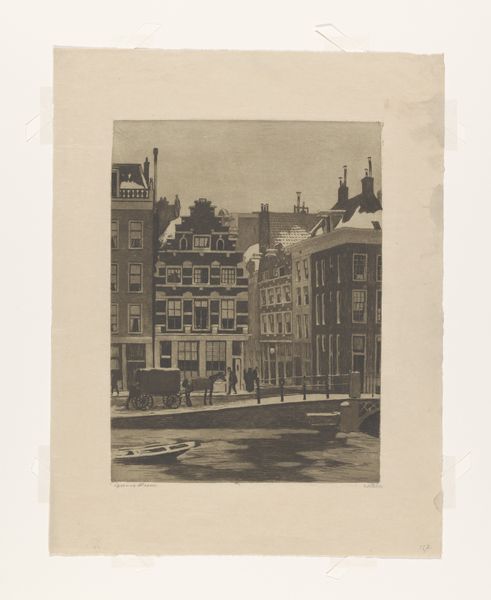
photography
#
dutch-golden-age
#
landscape
#
photography
#
19th century
#
cityscape
Dimensions: height 81 mm, width 81 mm, height 145 mm, width 234 mm
Copyright: Rijks Museum: Open Domain
Curator: This photograph captures a serene "View of the Singel in Amsterdam," dating approximately from 1860 to 1875. It's currently held here at the Rijksmuseum. Editor: My first impression is of stillness. There's a quiet harmony in the arrangement of the buildings, the boats, and the water itself. It's almost photographic stasis. Curator: Considering its time, that stillness is almost inherent to the photographic process. What’s crucial here, from my perspective, is understanding photography's rise within industrial capitalism. This isn't just a cityscape; it's a commodity, an easily reproducible image for consumption and trade. The act of capturing the Singel contributes to Amsterdam's brand, shall we say, within burgeoning tourist economies. Editor: Yes, the historical context of burgeoning tourism adds a critical dimension. But looking purely at the image itself, observe how the photographer meticulously composes the scene. The linear progression of buildings along the canal bank, punctuated by the verticals of the masts and subtly softened by the trees, establishes a clear, structured order. There’s even a kind of architectural rhythm set in motion that's beautifully balanced. Curator: Absolutely, the order underscores a period of urbanization, where canals facilitated the distribution of goods, making Amsterdam an important commercial hub. This photograph aestheticizes that functional element, reinforcing a narrative of progress and prosperity that obscures labor practices happening on and around the Singel. Who owns the boats, who cleans them, who navigates these vessels carrying products— those histories are somewhat erased here. Editor: True, and in light of those socio-economic considerations, there's a semiotic reading to be had concerning visibility itself. The photograph presents this pristine vision, but what remains out of frame? Whose labor or hardships remain literally unpictured, lending an uncritical gloss on reality? Curator: Exactly. Yet it's by wrestling with those erasures that we might gain new perspectives on its meanings. By viewing this “View of the Singel” not merely as an aesthetic object but a historical record, one whose creation itself was enabled by shifts in capital and labor, do we unveil hidden stories it contains. Editor: And in considering that relationship, it becomes possible to look at formal photographic elements with new critical interest as well. Curator: Precisely. Editor: It adds such texture and nuance to one’s experience!
Comments
No comments
Be the first to comment and join the conversation on the ultimate creative platform.
